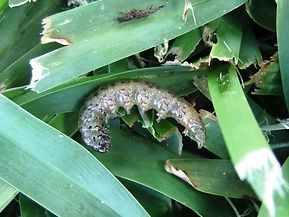
PESTS
AFRICAN BLACK BEETLE
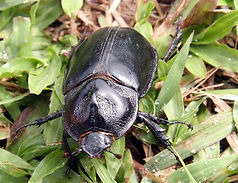
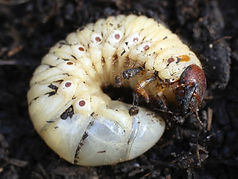
A common pest of lawns in Australia African Black Beetle can cause significant damage to home lawns. Larvae are a White to creamy-white, soft bodied curl grub up to 25mm long. They have three sets of legs with a hard, light brown head capsule. Mature adult beetles are shiny jet-black scarab beetle up to 15mm long with serrated front legs.
The female beetle can lay up to 80 eggs that hatch in 2-5 weeks, depending on temperature the larvae develop through 3 stages. The first instar feeds on decaying organic matter, and as they grow they begin feeding on plant roots. The fully grown larvae (3rd instar) are about 25mm long, creamy white in colour, curled up with 3 pairs of legs. When the larvae are fully grown they build an oval chamber, empty the hind gut and become a pre-pupae. After about a week the pre-pupae develop into pupae. The pupae develop into adult beetles after 1-3 months and emerge after rain or irrigation.
COUCH MITE
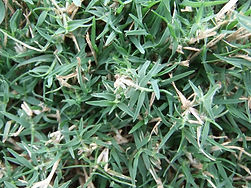

The immature couch mite is a translucent bodied mite which is invisible to the naked eye at only 0.1-0.15mm in length. As they mature the adult stage is slightly larger with a creamy white elongated abdomen up to 0.2mm long. Infestations of mites are typically identified by the characteristic symptoms of plant injury in the field. Once visible injury has occurred, pest pressure must be considered to be extensive. Infected turf first exhibits a slight yellowing of leaf tips followed by shortening of internodes and leaves, producing a rosetted or tufted growth known as “witches brooming”. Severe infestations result in stand loss, and large dead areas soon become infested with weeds. Damage is usually most severe during hot, dry conditions.
Biology and Lifecycle
Couch mites are active primarily during late spring and summer. Development from egg to adult requires 5-10 days. After eggs hatch, they pass through 2 nymphal instar stages and molt to adults. All life stages live together, protected under the leaf sheath, and often 100-200 mites and eggs can be observed under a single leaf blade. Mites are spread on grass clippings and have been observed hitch-hiking on other turf insects. Dispersal in wind is also common.
LAWN ARMY WORM
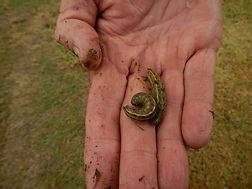
Lawn armyworm is a damaging pest when in the larval life stage. The larvae are a soft-bodied caterpillar with a dark coloured body up to 45mm long, they possess unique white and yellow striped patterns along the length of the back making them relatively easy to identify. When feeding, the larvae often appear in congregations, clumping around stems and foliage of the turf plant. Once mature, the caterpillar metamorphoses into a pale brown moth with a wingspan to 40mm, possesses a distinct white spot in the centre of the fore-wing.
MOLE CRICKET
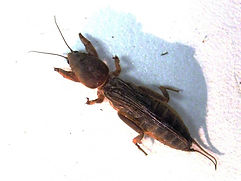

The mole cricket is a brown elongate insect pest with a hard, shiny head and wings, body up to 50mm long. They possess large front legs with jagged claws for digging, and powerful hind legs that are used for removing loose soil while burrowing.
SOD WEBWORM
Sod webworm is a relatively think caterpillar up to 25mm long with a pale green-brown body that is marked with characteristic dark spots along its length. When mature the adults become a slender bodied moth with a wingspan of 2.5cm. Their wings are grey with black spots and transverse dark wavy lines.
Biology and Lifecycle
Female sod webworms moths drop their non adhesive eggs onto turf while flying at night. The eggs fall into the thatch and hatch within 10 days, depending on temperature. Peak hatching occurs in early summer and continues throughout the summer months. The eggs tend to be oval or elliptical in shape with longitudinal ridges on the surface than run from pole to pole. Upon hatching most larvae burrow into the thatch and conceal themselves with particles or debris. These larvae remain concealed during the day and wander out at night to feed. By late spring or early summer the young adult moths emerge and fly just above the turf. These moths are especially active at dusk. The entire lifecycle generally takes about 6 weeks, and in most regions this pest has 2-3 generations per year.
